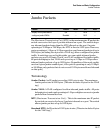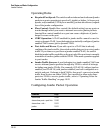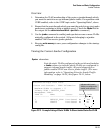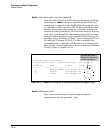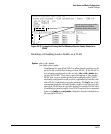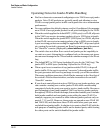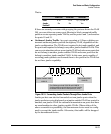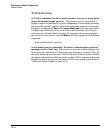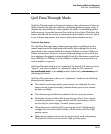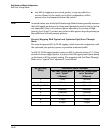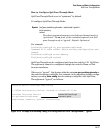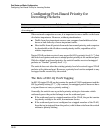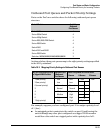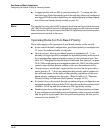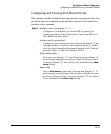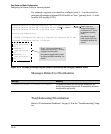
10-25
Port Status and Basic Configuration
QoS Pass-Through Mode
QoS Pass-Through Mode
QoS Pass-Through mode is designed to enhance the performance of line-rate
traffic transfers through the switch by optimizing hardware queue usage. It
disables any discrimination of QoS queues for traffic, consolidating packet
buffer memory to provide line-rate flows with no loss of data. Therefore, this
feature should only be used in environments where Quality of Service (QoS)
is not of major importance, but where lossless data transfers are key.
General Operation
The QoS Pass-Through mode enhancement provides a significant perfor-
mance improvement for high-bandwidth traffic flows through the switch,
particularly when running traffic flows from 1000Base to either 100Base or
10Base connections. However, the port buffering design for the switch has
been optimized for gigabit-to-gigabit traffic flows. For this reason, some flows
from 1000Base-to-100Base or even 100Base-to-10Base may not perform as
well as might be expected.
QoS Pass-Through mode is set to “optimized” by default. If it has been set to
“typical”, you can re-enable it to “optimized” using the CLI command
qos-passthrough-mode (in the config context) followed by write memory and
rebooting the switch.
QoS Pass-Through mode, when set to “optimized”, results in the following
general switch operation:
■ The switch's outbound priority queue scheme is configured for a two
queue scheme (normal and high), instead of four queues (low, normal,
medium, and high).
■ The outbound port buffers are optimized for a two-queue scheme.
■ All packets received with an 802.1p priority tag of 0 to 5 (low, normal,
or medium priorities), or tagged by the switch's QoS feature, will be
serviced by the (now larger) "normal" priority queue.
■ All packets received with an 802.1p priority tag of 6 or 7 (high priority),
or tagged by the switch's QoS feature, will be serviced by the "high"
priority queue.
■ High priority packets sourced by the switch itself, such as Spanning
Tree packets, will be serviced in the "high" priority queue.



